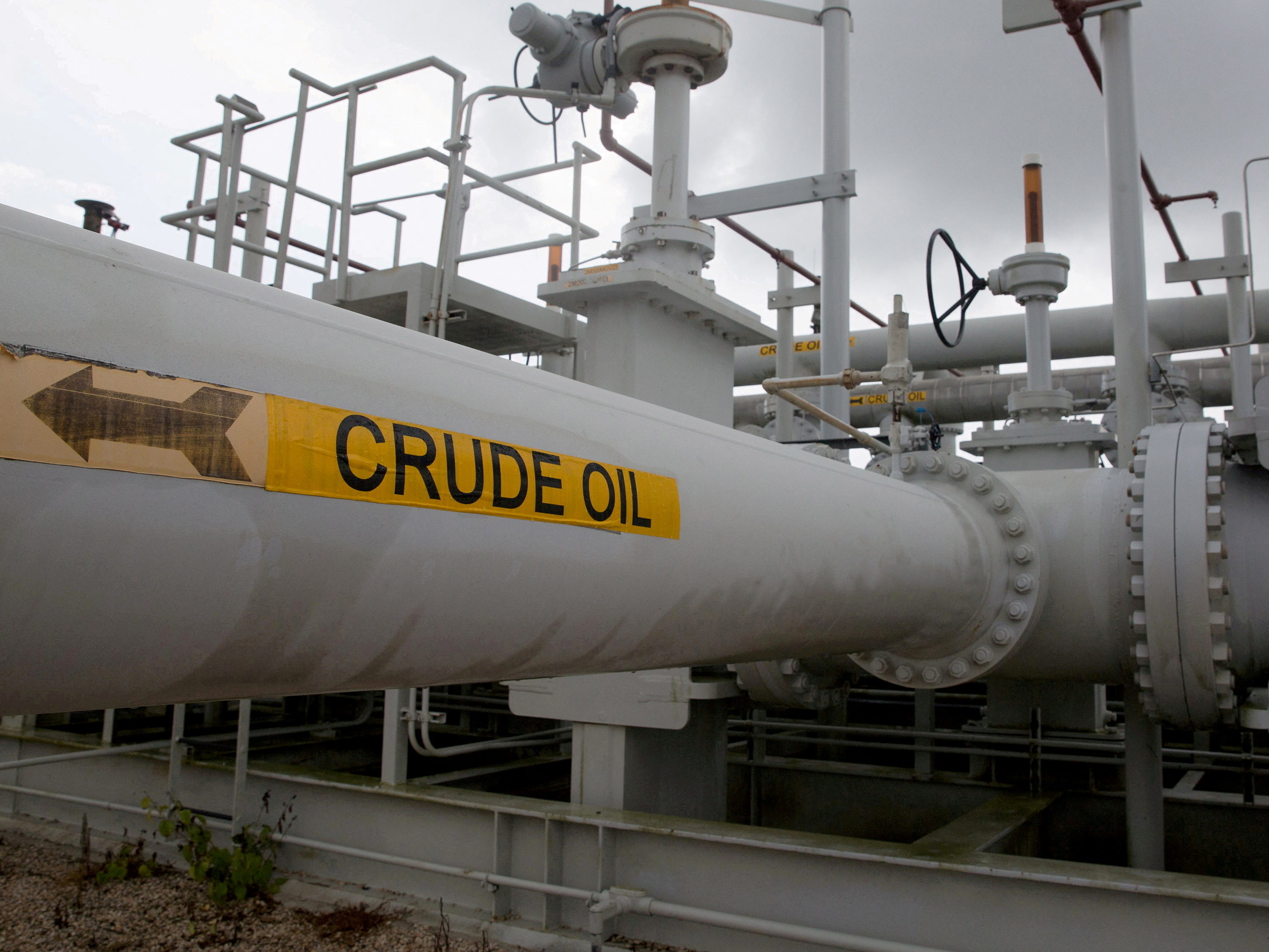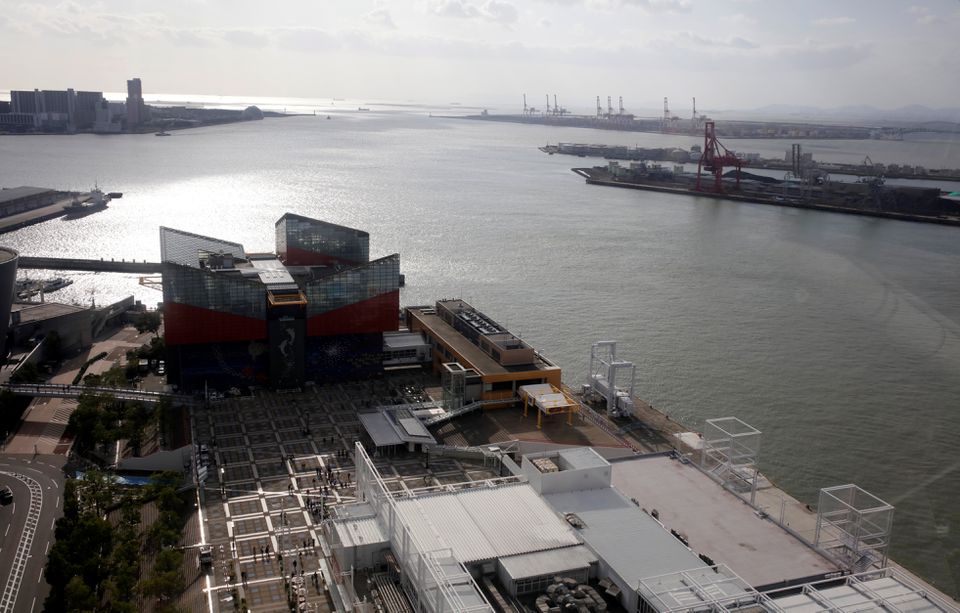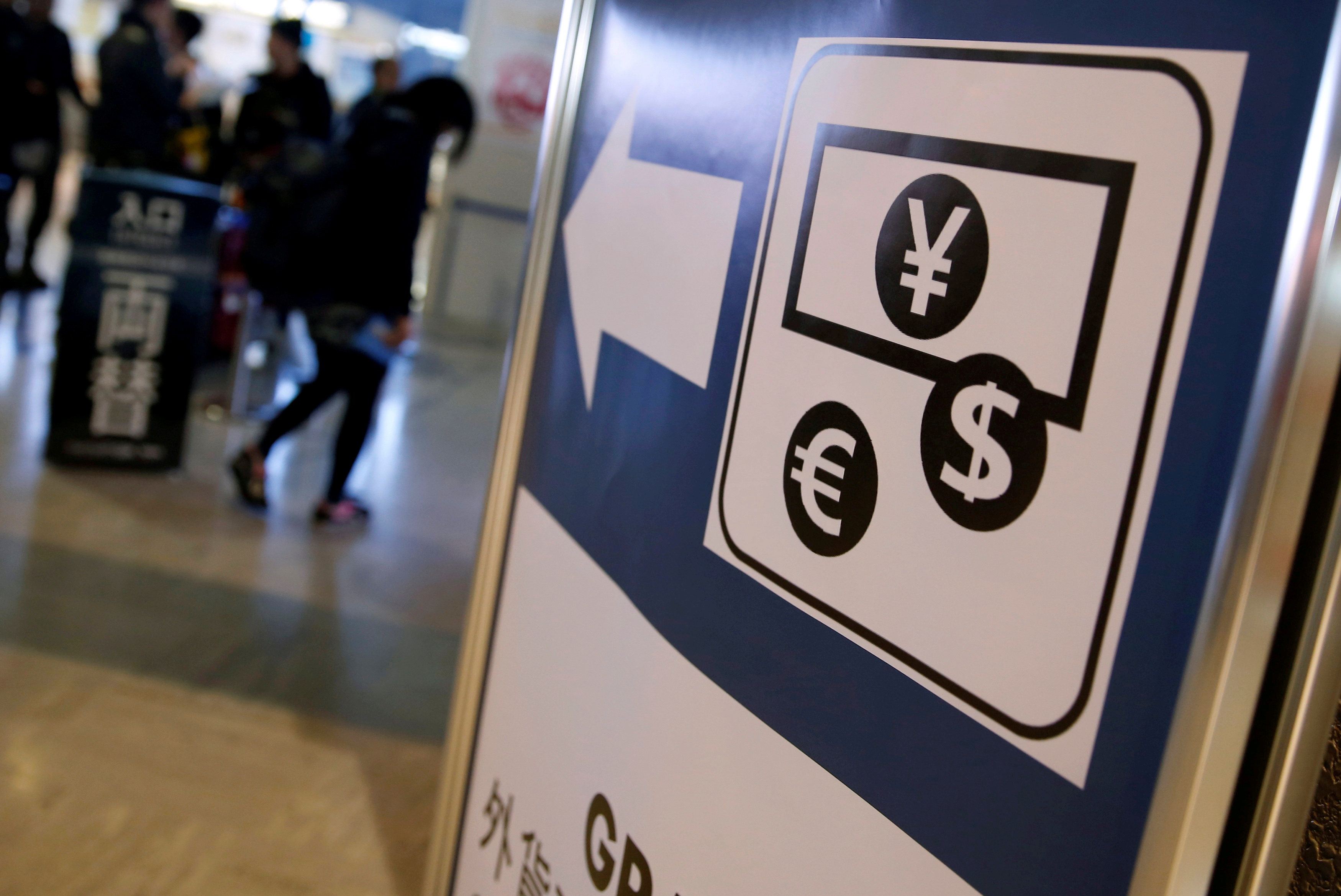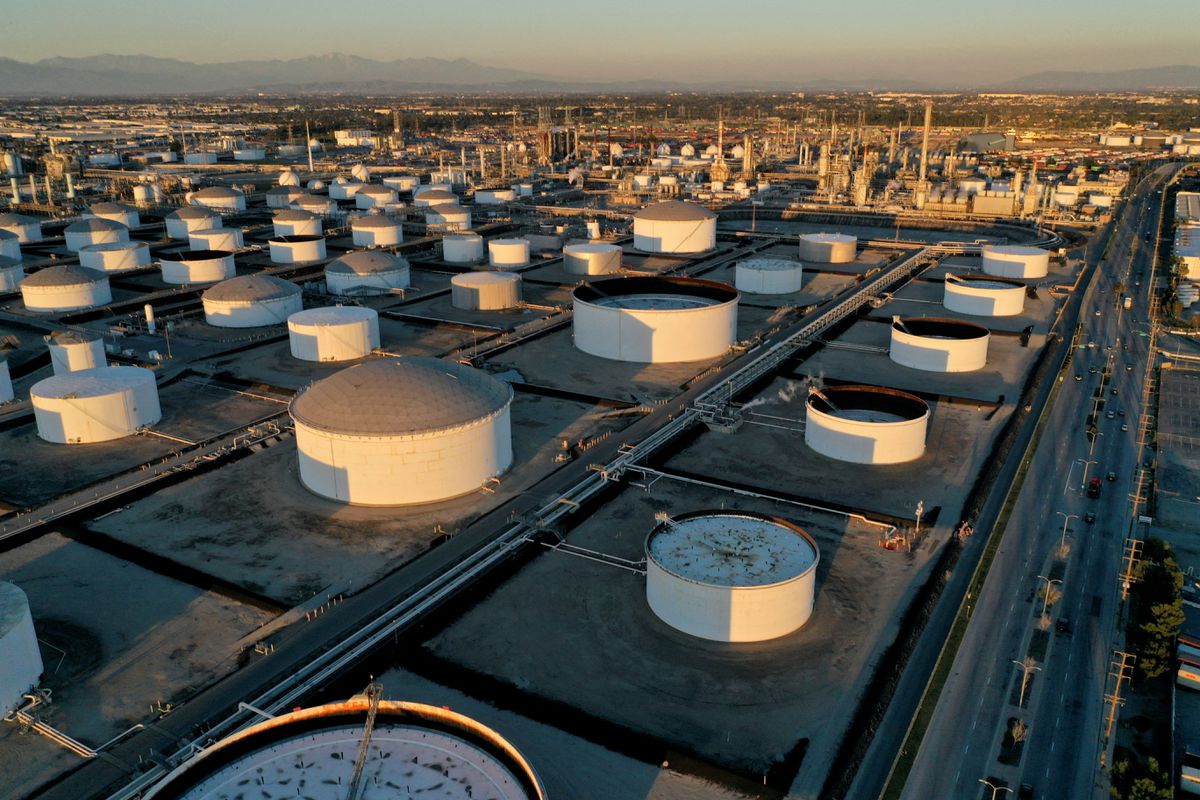WORLDWIDE: HEADLINES
Biden Administration Weighs Largest Ever Draw From Emergency Oil Reserve- Sources

The Biden administration is considering releasing up to 180 million barrels of oil over several months from the Strategic Petroleum Reserve (SPR), four U.S. sources said on Wednesday, as the White House tries to lower fuel prices.
The move would mark the third time the United States has tapped its strategic reserves in the past six months, and would be the largest release in the near 50-year history of the SPR.
So far, the releases have not managed to lower prices as world demand has nearly reached pre-pandemic levels while supply has tightened globally.
Oil prices have surged since Russia invaded Ukraine in late February and the United States and allies responded with hefty sanctions on Russia, the second-largest exporter of crude worldwide. Brent crude, the world benchmark, soared to about $139 earlier this month, highest since 2008, and was near $110 a barrel in Asian trading on Thursday.
President Joe Biden will deliver remarks on Thursday on his administration’s actions, the White House said.
Russia is one of the world’s top producers of oil, contributing about 10% to the global market. But sanctions and buyer reluctance to buy Russian oil could remove about 3 million barrels per day (bpd) of Russian oil from the market starting in April, the International Energy Agency (IEA) has said.
Russia exports 4 to 5 million bpd.
The news comes just before the Organization of the Petroleum Exporting Countries and its allies, an oil producer group known as OPEC+ that includes Saudi Arabia and Russia, meets to discuss reducing supply curbs. The United States, Britain and others have previously urged OPEC+ to quickly boost output.
However, OPEC+ is not expected to veer from its plan to keep boosting output gradually when it meets Thursday.
The U.S. SPR currently holds 568.3 million barrels, its lowest since May 2002, according to the U.S. Energy Department.
The United States is considered a net petroleum exporter by the IEA. But that status could change to net importer this year and then return to exporter again as output has been slow to recover from the COVID-19 pandemic.
Full coverage: REUTERS
Japan’s Feb Factory Output Rises For First Time In Three Months

Japanese factories posted their first rise in output in three months in February as resilience in global demand led to a rebound in car production, a welcome sign for policymakers hoping to keep the country’s fragile economic recovery on track.
The increase, however, was smaller than market expectations, underscoring the lingering impact of supply chain bottlenecks and other risks such as surging costs of raw materials.
Factory output rose 0.1% in February from the previous month, official data showed on Thursday, as growing production of cars and transport equipment offset a decline in chemicals.
That meant output returned to growth after slipping 0.8% in January and 1.0% in December. The increase was weaker than a 0.5% gain forecast in a Reuters poll of economists.
The outlook for the world’s third-largest economy has weakened after energy and commodity prices soared following Russia’s invasion of Ukraine last month. Prices for raw materials have surged, saddling exporters with higher input costs, while supply chain disruptions have increased.
“The situation in Ukraine is likely to worsen the parts shortage further,” said Takumi Tsunoda, senior economist at Shinkin Central Bank Research.
“It feels like there’s a risk the recovery in output will be delayed further.”
Japanese automakers and suppliers are also facing headwinds from coronavirus-related disruptions in China, the world’s largest market.
Thursday’s data showed output of cars and other motor vehicles gained 10.9% from the previous month in February, rebounding after a sharp contraction in January as pressure from parts shortages eased.
Manufacturers surveyed by the Ministry of Economy, Trade and Industry (METI) expected output to advance 3.6% in March and 9.6% in April.
Full coverage: REUTERS
WORLDWIDE: FINANCE/BUSINESS
Asian Stocks Ease, Oil Sinks As U.S. Weighs Reserves Release

Asian stocks on Thursday eased after this week’s global rally, following Wall Street’s overnight stumble, while oil dropped sharply as the United States weighed a massive draw from its reserves to rein in surging fuel prices.
Brent crude futures were down 4.4% at $108.50 a barrel and U.S. crude futures fell more than 5% to $101.76 a barrel in morning trade.
The United States is considering releasing up to 180 million barrels of oil over several months from strategic reserves, four U.S. sources said, as the White House tries to lower fuel prices that have surged since Russia invaded Ukraine late last month.
A stocks rally, meanwhile, lost momentum as hopes for a quick peace started to fade and the upbeat sentiment turned to worry about looming interest rate hikes.
MSCI’s broadest index of Asia-Pacific shares outside Japan fell 0.2%, led by a 0.7% drop for Hong Kong’s Hang Seng (.HSI). Japan’s Nikkei (.N225) fell 0.2%. Australia’s resource-heavy index (.AXJO) was up 0.4%.
Overnight, the Dow Industrial Average (.DJI), the S&P 500 (.SPX) and the Nasdaq Composite (.IXIC) were down, following similar downward movements in European stocks.
“In U.S. markets, which we take our cue from, the sell-offs are reflecting an ongoing assessment of inflation threats and what the Fed is going to do about it,” said Rob Carnell, chief economist at ING in Singapore.
“At the same time, in the last 24 hours, markets have responded cautiously positively to events in Ukraine, with Russia refocusing away from Kyiv, but things are still looking quite uncertain.”
Bond markets were smouldering after a stinging sell off.
Two-year Treasury yields, which track policy expectations, were last at 2.2922% and have climbed more than 150 basis points for the quarter – the steepest such rise since 1984 on expectations of quick-fire interest rate hikes.
The yield on the 10-year Treasury note, which is more sensitive to the outlook for long-term growth, was last at 2.3378% after hitting 2.56% on Monday, the highest since May 2019.
Full coverage: REUTERS
Euro Holds At One-month High, Yen Set For Worst Month Since 2016

The euro held at a one-month high against the dollar on Thursday, having rallied on hopes the war in Ukraine might be entering a new de-escalating phase, while the yen was set for its worst month since November 2016.
The European single currency was at $1.1175 holding its highest in a month, having gained 1.7% so far this week.
“The euro has been one of the biggest winners over the past sessions, part of that reflects the positive news about the Russia Ukraine tensions,” said Carol Kong, an FX strategist at Commonwealth Bank of Australia.
Kong said sustained euro gains would be dependent on further developments in Ukraine.
At peace talks this week in Istanbul, Russia said it would curtail operations near Kyiv and the northern city of Chernihiv to build trust, though Ukraine and its Western allies dismissed Russia’s pledge as a ploy to stem losses and prepare for other attacks.
Ukrainian forces are preparing for new Russian attacks in the east of the country, President Volodymyr Zelenskiy said on Thursday.
The euro’s gains, as well as a brief recovery for the Japanese yen and strength for commodity currencies like the Canadian dollar, meant the dollar index fell to 97.681 overnight, its lowest level in three weeks.
It was at 97.778 on Thursday morning.
However, the yen resumed its decline on Thursday, with the dollar climbing 0.5% to as high as 122.45 yen.
The Japanese currency has fallen sharply this month, dropping to its lowest since November 2015 on Monday, before recovering slightly over the following days.
Intervention by the Bank of Japan to prevent government bond yields rising too high has reinforced the contrast with rising rates in the United States, causing the yen to decline.
It is set for its worst month since November 2016.
Thursday’s moves in Japanese assets are likely to be choppy, said CBA’s Kong as it is the end of the fiscal year.
Elsewhere, sterling was fairly steady at $1.3143, and the Aussie dollar was at $0.7509 holding this month’s 3.3% gains, but struggling to climb higher.
Full coverage: REUTERS
Oil Prices Tumble More Than $5 A Barrel As Biden Weighs Massive Reserves Release

Oil futures dived more than $5 a barrel on Thursday morning on news that the Biden administration is weighing releasing some 1 million barrels of oil per day from strategic reserves for several months in a bid to calm soaring crude prices.
Brent futures were down $4.71, or 4.2%, to $108.58 a barrel and U.S. West Texas Intermediate futures were down $5.45, or 5%, to $102.74 a barrel at 0035 GMT.
The Biden administration will give remarks later on Thursday where he is expected to announce the plan, aimed at lowering gasoline prices that have hit record levels following Russia’s invasion of Ukraine. Prices had settled up around 3% on Wednesday, driven by supply concerns as peace talks between Russia – which calls its actions a “special operation” – and Ukraine appeared to have stalled.
“It’s a sentiment shock, but if recent history suggests anything the reserve release will only be a temporary fix and akin to putting a band-aid on a broken leg,” said Stephen Innes, Managing Partner at SPI Asset Management.
In early March, the Biden administration said it would release 30 million barrels from its strategic reserves as part of a global release of 60 million barrels in a bid to lower prices.
The release comes as U.S. oil stocks fell by 3.4 million barrels in the week to March 25, surpassing forecasts of a 1 million barrel drop, but implied demand for gasoline and distillates also declined.
An apparent slowing of demand came as U.S. production rose by 100,000 barrels per day to 11.7 million bpd after stagnating at 11.6 million bpd since early February.
Full coverage: REUTERS


 Home
Home